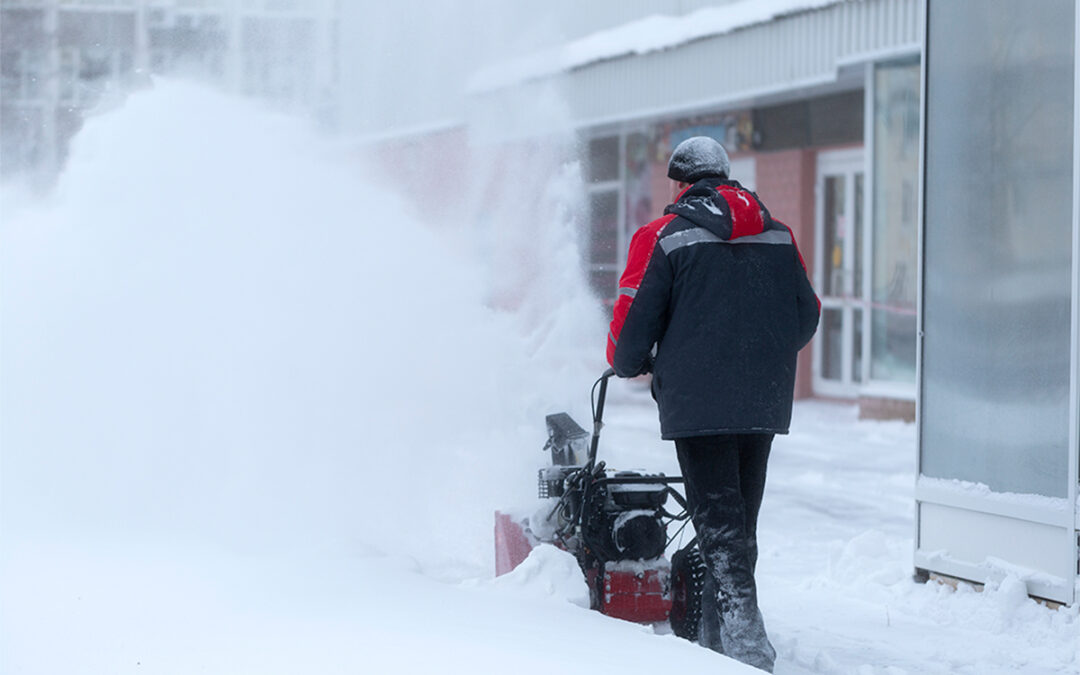Winter storms in the U.S. led to $3.4 billion in policyholder losses in 2023 — and it wasn’t even a bad year. Since winter storms are a fact of life in the Northeast, doing everything you can to prepare for them is just good business.
Here’s how to prepare your business for a winter storm.
Step 1: Know your risks.
Depending on the structure of your building and the nature of your business, your company will have its own unique set of risks in a winter storm. Determine which of these conditions pose the greatest risk for loss or damage:
- Poor road conditions/road closures. Does your company depend on delivery vehicles or company cars to get business done? Do you have employees who travel long distances to get to work? These factors can make road conditions a top risk.
- Property damage due to snowfall and high winds. The weight of snow on your business’s roof can cause structural damage, as can strong storm winds in blizzard conditions.
- Power outages. Few businesses wouldn’t be negatively affected by a power outage, but those with perishable inventory or temperature-sensitive equipment are at higher risk for losses. Also, when the power comes back on, surges can damage electronic equipment.
- Slip and fall injuries. Icy or snow-covered walkways can lead to customer and employee injuries, workers compensation claims, and possible litigation.
- Frozen pipes. Exposed, uninsulated pipes in a building’s unheated areas (like garages or basements) can freeze and burst in frigid temperatures, which can result in water damage.
Step 2: Review your insurance coverage.
The day after a winter storm hits and temporarily shuts down your business is too late to purchase a policy covering you for business interruptions. Sit down now with a local, independent agent and review your business coverage. Go over the risks you evaluated in Step 1, and make sure your coverage protects you for as many of them as possible.
Also, make sure you keep careful records of your inventory and equipment. This will expedite your insurance claim if any of these items are damaged in a storm.
Step 3: Prepare your building.
Keeping in mind your top risks, do everything you can to safeguard your building:
- Purchase a generator and stockpile fuel. If your business doesn’t already have a generator, consider investing in one. An electrician can tell you how big a generator you need by examining your building’s electrical panel. Once you have the generator, make sure you have an adequate supply of fuel for it to support operations during a power outage.
- Insulate pipes in unheated/exposed areas. This can be done with inexpensive foam or rubber pipe insulation, available at hardware stores or online.
- Have your roof inspected (and repaired, if necessary). Keeping up with regular roof maintenance throughout the year will help ensure that it’s strong enough to withstand heavy snow and wind.
- Stock up on tools and supplies to keep walkways clear. Even if your landlord is responsible for snow and ice removal, or you’ve hired a vendor, it’s still a good idea to keep a snow shovel, rock salt, and cat litter on hand just in case.
Step 4: Prepare your people.
- Create a disaster preparedness plan and share it with your employees. You can find guidelines for creating a comprehensive emergency plan at Ready.gov. Make sure everyone knows their roles and responsibilities in an emergency. Review the plan with your employees regularly.
- Practice. Have all employees rehearse escape/evacuation plans. Also, make sure everyone knows the location of any relevant safety equipment (e.g., emergency lighting, fire extinguishers, or portable generators) and how to use it.
- Maintain up-to-date contact information. Make a list of your employees’ contact information as well as backup contacts (such as spouses or parents), in case they can’t be reached at their usual phone number or email address. Make sure you also have contact information for all your suppliers and customers so you can notify them of any business interruptions or delays. Update the list regularly and keep a hard copy and/or cloud backup.
- Establish closure criteria. Decide ahead of time what kind of predicted weather conditions will prompt you to temporarily close your business. That way, you can notify employees in advance.
- Stock up on supplies to shelter in place. Make sure you have a battery-operated weather radio, flashlights with extra batteries, a first-aid kit, blankets, gloves, and a multi-day supply of water and non-perishable food in case weather conditions prevent you and your employees from leaving the building.
Follow these steps to prepare your business for winter storms, and you’ll be able to minimize property damage and downtime while maximizing the safety of your employees. To learn how to prepare for all kinds of weather threats, read our blog, “Mastering Mother Nature: Top weather preparedness tips for your home and business.”
This content was developed for general informational purposes only. While we strive to keep the information relevant and up to date, we make no guarantees or warranties regarding the completeness, accuracy, or reliability of the information, products, services, or graphics contained within the blog. The blog content is not intended to serve as professional or expert advice for your insurance needs. Contact your local, independent insurance agent for coverage advice and policy services.
